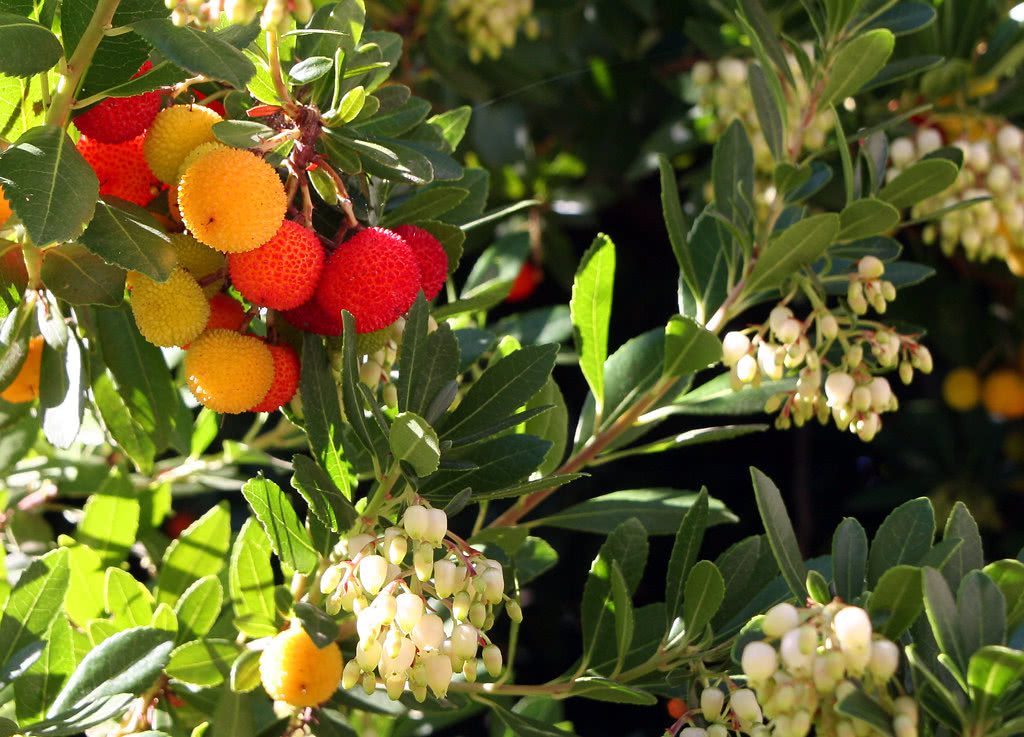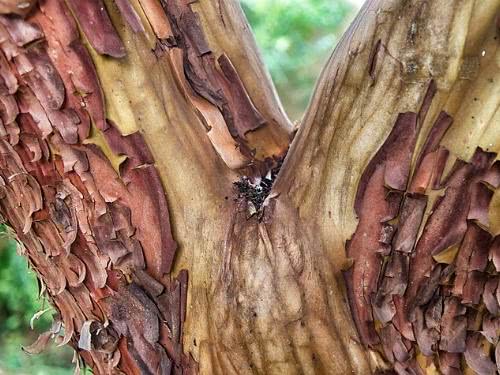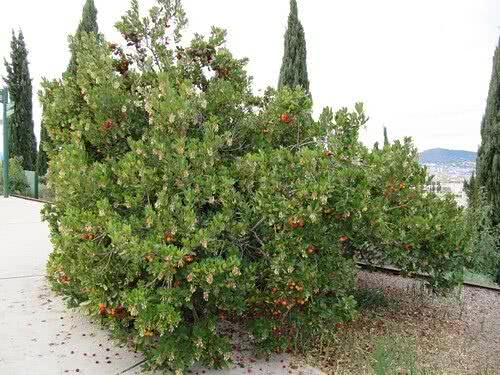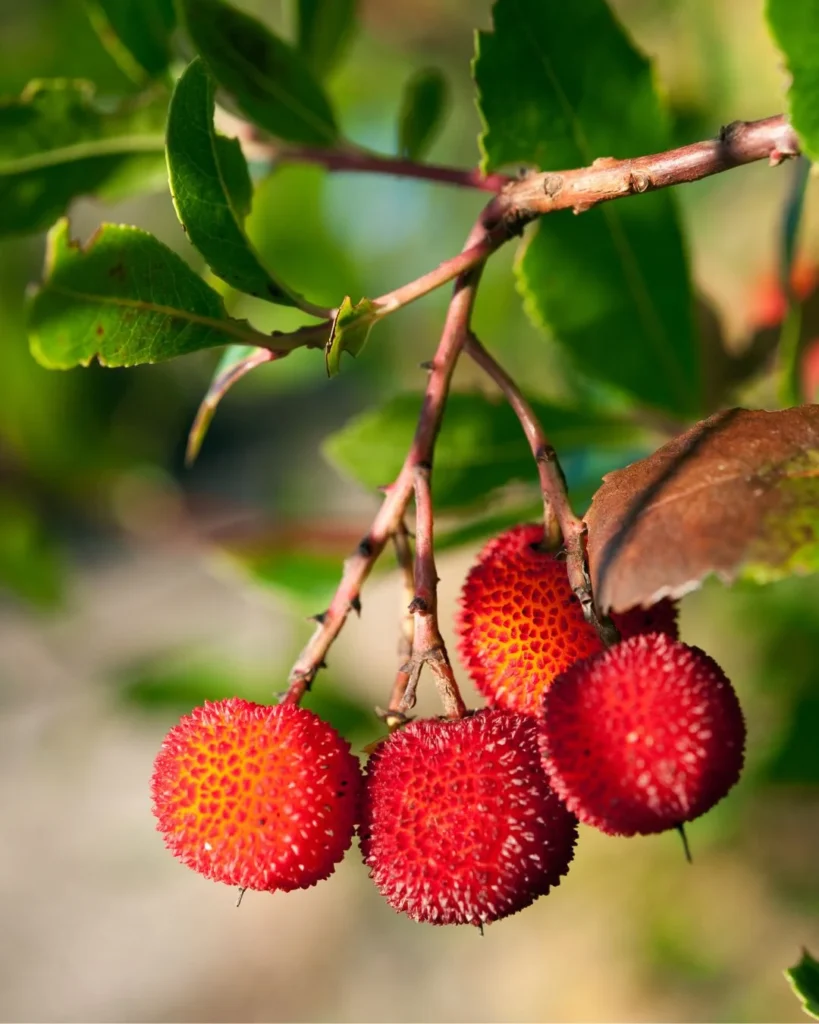The strawberry tree (Arbutus unedo) is a perennial fruit-bearing tree or shrub of high ornamental value, native to the Mediterranean region and Western Europe. Its crown is rounded to irregular, open, bushy growth with several upright branches that are reddish when young, emerging from the short and twisted trunk. As the tree ages, its trunk becomes more gnarled and its bark turns brown. It features large, simple, alternate, leathery, resilient leaves with an elliptical shape and a shiny dark green color.

Flowering occurs between late autumn and early winter, with panicle-type inflorescences. The flowers themselves are white, yellowish, or pinkish, resembling small balloons or bells. They are hermaphroditic and pendulous, arranged in a decorative manner. The fruits of the strawberry tree, known as “medronhos,” in portuguese, turn reddish-orange when ripe and are berry-like, rounded, with a granulated skin, yellow juicy edible pulp. Its seeds are small, brown, and angular. It’s not uncommon for the plant to flower while still bearing fruits, as they take nearly a year to mature.

This tree is suitable for creating woodlands and rows in Mediterranean climates and rocky soils. It’s one of the few species capable of thriving on slopes. Due to its hardiness, cultivating it in your yard, especially for fruit consumption, isn’t challenging. It fares well in residential and spacious gardens, as well as orchards on estates and farms. It adds not only its fruit but also its decorative value to the environment with its graceful shape and abundant, long-lasting flowering. It can also be grown in large pots to adorn terraces and balconies.
The strawberry tree is an ideal tree for those who enjoy reading a good book or resting in the shade, as its dense canopy provides a cool and relaxing space during the summer heat. Moreover, it has a strong regeneration capacity after wildfires, helps prevent soil erosion, and can be used in phytoremediation of arsenic-contaminated soil.
In addition to all its qualities, the branches of the strawberry tree can be used in floral arrangements. It attracts bees, butterflies, and birds, making it even more valuable for landscaping. Many beekeepers take advantage of its abundant flowering to produce exceptional quality honey. Maintenance includes trimming for cleanliness, with crown shaping pruning recommended during its early growth phase.

The fruits of the strawberry tree are rich in vitamins A and C, as well as carotene, and possess antioxidant properties. They are highly appreciated in southern Portugal and can be consumed fresh when fully ripe or used to make jams, liqueurs, and brandies. The taste of the fruit isn’t unanimous, as some people enjoy it while others find it unpleasant.
The strawberry tree thrives in full sun or partial shade and adapts well to poor soils and extreme environmental conditions. It prefers siliceous soils with good drainage, depth, and moisture. It has a moderate water requirement, needing regular watering after planting and during dry periods in its early development.
After it’s fully established, irrigation isn’t necessary. It tolerates winter cold, capable of withstanding temperatures below -12°C (10°F). The strawberry tree can be propagated from cuttings or by sowing.

